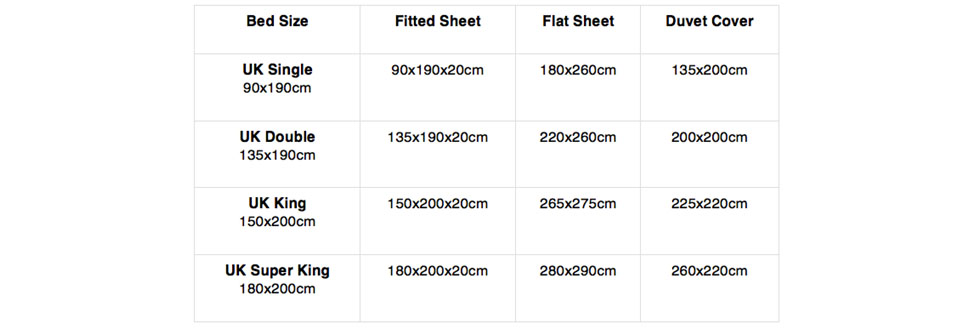How to choose
the best bed linen
Choose the best bed linen for your bed with our simple buying guide
A good night’s sleep has great impact on our health and well-being. Our beds and bed linen are major factors in the quality of sleep we get. In this guide, we’ll take you through the essentials for creating your dream bed, ensuring your best sleep ever.
What types of materials are there?
Polycotton
A fabric made with a blend of polyester and cotton, combining the individual strengths of the two fibres. Polycotton is breathable, with good moisture absorbing qualities of cotton and lightweight, non-iron properties of polyester.
Cotton
Cotton is a natural material, providing excellent breathability and softness for extra comfort, and it’s suitable for use throughout the year. The fabric will keep you cool in the summer and warm in winter by absorbing and retaining body heat.
Egyptian Cotton
Luxurious and fine, Egyptian Cotton is well known as one of the finest choices when it comes to bedding. Natural breathability and temperature regulating qualities are perfect for year round use. The extra-long fibres make it highly durable, allowing for tighter and stronger weaves.
Linen
Made from natural fibres from the flax plant, a heavier and stronger material compared to cotton. It doesn’t retain moisture, with high heat conductivity and breathability properties keeping you warm in winter and cool in summer.
Silk
Natural silk fibre is hypoallergenic, sumptuously soft and comfortable, keeping you warm in winter and cool in summer. Well known to be popular to help retain moisture in skin and hair, it can help in minimising wrinkles.
What is thread count?
The thread count is the density of threads per square inch; this generally means a higher thread count will feel softer and smoother. Finer threads allows for more to be woven in, which creates a better quality fabric, this ultimately leads for a softer feel against your skin.
- 180 - 220 Good
- 230 - 280 Very Good
- 300 - 400 Excellent
- 500 - 600 Premium
- 600+ Luxury
Types of weaves
Percale
A type of matt finished plain weave, with a firm level of crispness and smoothness against your skin.
Poplin
A tighter weave compared to regular cotton, it requires very little ironing which is perfect for a busy lifestyle.
Satin
Created from a mixture of fibres, satin has a soft and subtle sheen finish and is perfect if you like slightly silky sheets.
Waffle
A honeycomb or grid texture creates a heavier weave with recessed patterns.
Bed Linen Sizes
All of our bed linen has the dimensions clearly listed on the product page; if you are not sure what size you require, please take a look at the simple guide below.
Please note the guide is just an average and some product sizes may differ slightly. Ensure to check the measurements you require before placing an order.

Quick and easy tips to care for your bed linen
• It’s always best to check the care label before washing your bed linen. The different types of fabrics, weaves and thread counts may require different care.
• When washing your bed linen, it’s preferable to separate them from the rest of your laundry. The more space they have to circulate in the machine will mean a more thorough clean, it also avoids any damage by zips or buttons.
• In order to reduce the number of wrinkles, remove your sheets and covers as soon as the cycle has finished. Dry outside if possible, ideally out of direct sun to avoid any colour fade or bleaching.
• Keep your sheets fresh and extend their lifetime by washing your sheets on a weekly basis. Not only will your sheets benefit, your skin and sleep will be improved too.
• Rotate a few sets of sheets to avoid waiting for your last set to dry before bedtime and to improve their lifetime of use. We generally recommend having at least 3 sets of bed sheets per bed in your home.
More Inspiration
















